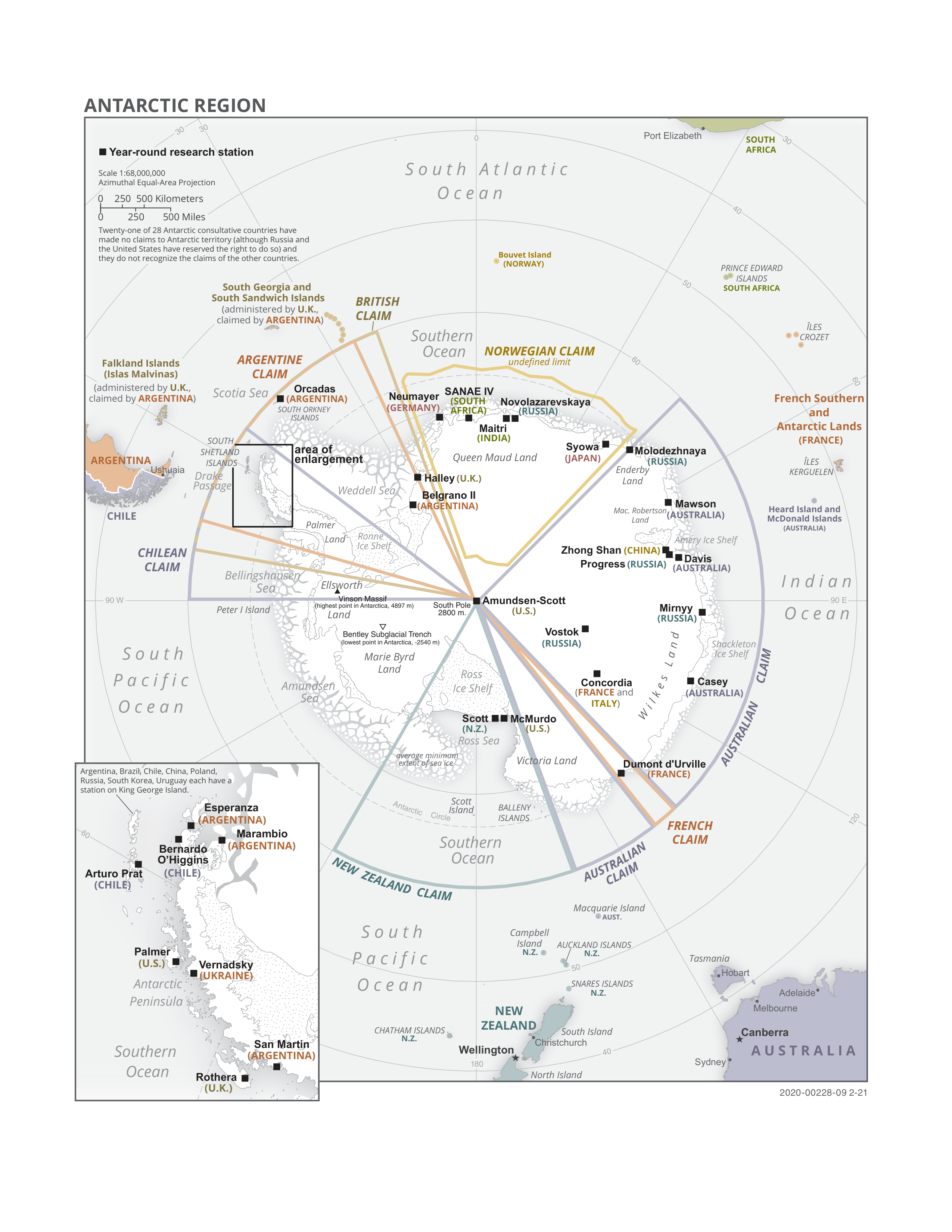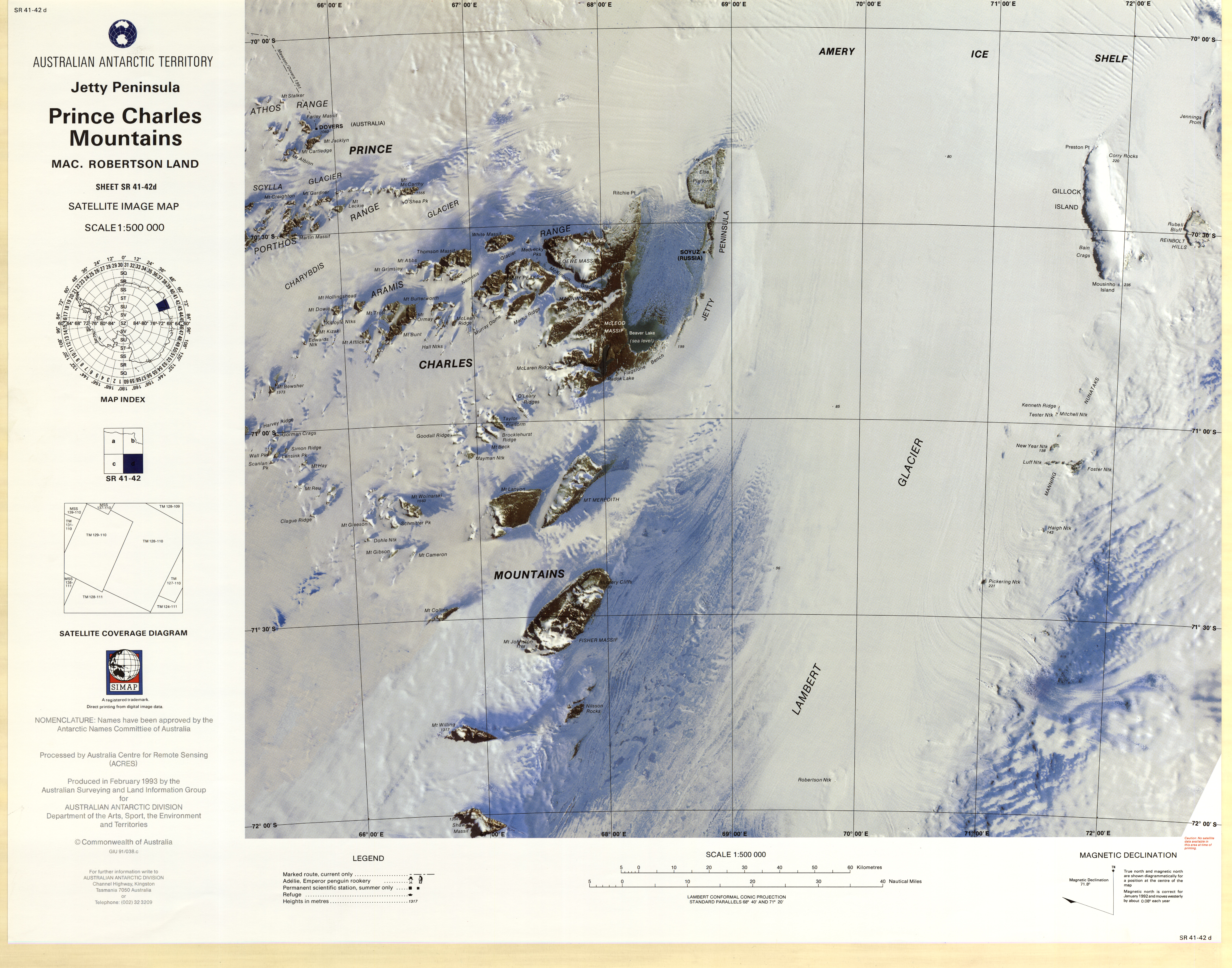|
Gillock Island
Gillock Island is an ice-covered island, long and wide, with numerous rock outcrops exposed along its flanks. It is aligned north–south and lies in the eastern part of Amery Ice Shelf. Delineated in 1952 by John H. Roscoe from air photos taken by U.S. Navy Operation Highjump (1946–47). Named by him for Lieutenant Robert A. Gillock, U.S. Navy, navigator on Operation Highjump photographic flights over this and other coastal areas between 14°E and 164°E. The Bain Crags () are a number of rock exposures, many of which are banded, in the face of or projecting from the ice cliffs along the south part of the west side of Gillock Island. The feature was visited in January 1969 by J.H.C. Bain, geologist with the Australian National Antarctic Research Expeditions Prince Charles Mountains survey party, after whom it is named. See also * Composite Antarctic Gazetteer * List of Antarctic and sub-Antarctic islands * List of Antarctic islands south of 60° S * SCAR * Territorial c ... [...More Info...] [...Related Items...] OR: [Wikipedia] [Google] [Baidu] |
Antarctica
Antarctica () is Earth's southernmost and least-populated continent. Situated almost entirely south of the Antarctic Circle and surrounded by the Southern Ocean (also known as the Antarctic Ocean), it contains the geographic South Pole. Antarctica is the fifth-largest continent, being about 40% larger than Europe, and has an area of . Most of Antarctica is covered by the Antarctic ice sheet, with an average thickness of . Antarctica is, on average, the coldest, driest, and windiest of the continents, and it has the highest average elevation. It is mainly a polar desert, with annual Climate of Antarctica#Precipitation, precipitation of over along the coast and far less inland. About 70% of the world's freshwater reserves are frozen in Antarctica, which, if melted, would raise global sea levels by almost . Antarctica holds the record for the Lowest temperature recorded on Earth, lowest measured temperature on Earth, . The coastal regions can reach temperatures over in the ... [...More Info...] [...Related Items...] OR: [Wikipedia] [Google] [Baidu] |
Antarctic Treaty System
The Antarctic Treaty and related agreements, collectively known as the Antarctic Treaty System (ATS), regulate international relations with respect to Antarctica, Earth's only continent without a native human population. It was the first arms control agreement established during the Cold War, designating the continent as a scientific preserve, establishing freedom of scientific investigation, and banning Military activity in the Antarctic, military activity; for the purposes of the treaty system, Antarctica is defined as all the land and ice shelf, ice shelves south of 60th parallel south, 60°S latitude. Since September 2004, the Antarctic Treaty Secretariat, which implements the treaty system, is headquartered in Buenos Aires, Argentina. The main treaty was opened for signature on 1 December 1959, and officially coming into force, entered into force on 23 June 1961. The original signatories were the 12 countries active in Antarctica during the International Geophysical Year ... [...More Info...] [...Related Items...] OR: [Wikipedia] [Google] [Baidu] |
Island
An island or isle is a piece of land, distinct from a continent, completely surrounded by water. There are continental islands, which were formed by being split from a continent by plate tectonics, and oceanic islands, which have never been part of a continent. Oceanic islands can be formed from volcano, volcanic activity, grow into atolls from coral reefs, and form from sediment along shorelines, creating barrier islands. River islands can also form from sediment and debris in rivers. Artificial islands are those made by humans, including small rocky outcroppings built out of lagoons and large-scale land reclamation projects used for development. Islands are host to diverse plant and animal life. Oceanic islands have the sea as a natural barrier to the introduction of new species, causing the species that do reach the island to evolve in isolation. Continental islands share animal and plant life with the continent they split from. Depending on how long ago the continental is ... [...More Info...] [...Related Items...] OR: [Wikipedia] [Google] [Baidu] |
Amery Ice Shelf
The Amery Ice Shelf () is a broad ice shelf in Antarctica at the head of Prydz Bay between the Lars Christensen Coast and Ingrid Christensen Coast. It is part of Mac. Robertson Land. The name "Cape Amery" was applied to a coastal angle mapped on 11 February 1931 by the British Australian New Zealand Antarctic Research Expedition (BANZARE) under Douglas Mawson. He named it for William Bankes Amery, a civil servant who represented the United Kingdom government in Australia (1925–28). The Advisory Committee on Antarctic Names interpreted this feature to be a portion of an ice shelf and, in 1947, applied the name Amery to the whole shelf. In 2001 two holes were drilled through the ice shelf by scientists from the Australian Antarctic Division and specially designed seabed sampling and photographic equipment was lowered to the underlying seabed. By studying the fossil composition of sediment samples recovered, scientists have inferred that a major retreat of the Amery Ice Sh ... [...More Info...] [...Related Items...] OR: [Wikipedia] [Google] [Baidu] |
Operation Highjump
Operation HIGHJUMP, officially titled The United States Navy Antarctic Developments Program, 1946–1947, (also called Task Force 68), was a United States Navy (USN) operation to establish the Antarctic research base Little America (exploration base), Little America IV. The operation was organized by Rear admiral (United States)#Rear admiral, Rear Admiral Richard E. Byrd, Jr., USN, Officer in Charge, Task Force 68, and led by Rear Admiral Ethan Erik Larson, USN, Commanding Officer, Task Force 68. Operation HIGHJUMP commenced 26 August 1946 and ended in late February 1947. Task Force 68 included 4,700 men, 70 ships, and 33 aircraft. HIGHJUMP's objectives, according to the U.S. Navy report of the operation, were: # Training personnel and testing equipment in frigid conditions; # Consolidating and extending the United States' sovereignty over the largest practicable area of the Antarctic continent (publicly denied as a goal before the expedition ended); # Determining the feasibility ... [...More Info...] [...Related Items...] OR: [Wikipedia] [Google] [Baidu] |
Australian National Antarctic Research Expeditions
The Australian National Antarctic Research Expeditions (ANARE ) is the historical name for the Australia: Antarctic Program#Australian Antarctic program, Australian Antarctic Program (AAP) administered for Australia by the Australian Antarctic Division (AAD). History Australia has had a long involvement in South Pole, south polar regions since as early as Douglas Mawson's Australasian Antarctic Expedition in 1911. Further Australian exploration of the Antarctic continent was conducted during the British Australian and New Zealand Antarctic Research Expedition (BANZARE), which was conducted over the years 1929–1931. The Australian National Antarctic Research Expeditions were established in 1947 with expeditions to Macquarie Island and Heard Island. In 1948 the Australian Antarctic Division (AAD) was established to administer the expedition program. ANARE Name The name ANARE fell out of official use in the early 2000s. However current and former Australian Antarctic expedit ... [...More Info...] [...Related Items...] OR: [Wikipedia] [Google] [Baidu] |
Prince Charles Mountains
The Prince Charles Mountains are a major group of mountains in Mac. Robertson Land in Antarctica, including the Athos Range, the Porthos Range, and the Aramis Range. The highest peak is Mount Menzies, with a height of . Other prominent peaks are Mount Izabelle and Mount Stinear (). These mountains, together with other scattered peaks, form an arc about long, extending from the vicinity of Mount Starlight in the north to Goodspeed Nunataks in the south. These mountains were first observed and photographed from a distance by airmen of USN Operation Highjump, 1946–47. They were examined by several ANARE (Australian National Antarctic Research Expeditions) parties and mapped in the years 1954–61. They have been found to contain large deposits of iron ore. They were named by ANCA in 1956 for King Charles III, then the eight-year-old Prince Charles and son of the late Queen Elizabeth II. List of key mountains * Mount Afflick () is a ridge-like mountain about west of Mount ... [...More Info...] [...Related Items...] OR: [Wikipedia] [Google] [Baidu] |
Composite Antarctic Gazetteer
The Composite Gazetteer of Antarctica (CGA) of the Scientific Committee on Antarctic Research (SCAR) is the authoritative international gazetteer containing all Antarctic toponyms published in national gazetteers, plus basic information about those names and the relevant geographical features. The Gazetteer includes also parts of the International Hydrographic Organization (IHO) General Bathymetric Chart of the Oceans (GEBCO) gazetteer for under-sea features situated south of 60° south latitude. , the overall content of the CGA amounts to 37,893 geographic names for 19,803 features including some 500 features with two or more entirely different names, contributed by the following sources: {, class="wikitable sortable" ! Country ! Names , - , United States , 13,192 , - , United Kingdom , 5,040 , - , Russia , 4,808 , - , New Zealand , 2,597 , - , Australia , 2,551 , - , Argentina , 2,545 , - , Chile , 1,866 , - , Norway , 1,706 , - , Bulgaria , 1,450 , - , G ... [...More Info...] [...Related Items...] OR: [Wikipedia] [Google] [Baidu] |
List Of Antarctic And Sub-Antarctic Islands
This is a list of Antarctic and sub-Antarctic islands. * Antarctic islands are, in the strict sense, the islands around mainland Antarctica, situated on the Antarctic Plate, and south of the Antarctic Convergence. According to the terms of the Antarctic Treaty, claims to sovereignty over lands south of 60° S are not asserted.Antarctic Treaty, Article VI Dec. 1, 1959 12 UST 794; 402 UNTS 71; 19 ILM 860 (1980) * Sub-Antarctic islands are the islands situated closer to another continental mainland or on another tectonic plate, but are [...More Info...] [...Related Items...] OR: [Wikipedia] [Google] [Baidu] |
Scientific Committee On Antarctic Research
The Scientific Committee on Antarctic Research (SCAR) is an interdisciplinary body of the International Science Council, International Science Council (ISC). SCAR coordinates international scientific research efforts in Antarctica, including the Southern Ocean. SCAR's scientific work is administered through several discipline-themed ''science groups''. The organisation has observer status at, and provides independent advice to Antarctic Treaty System, Antarctic Treaty Consultative Meetings, and also provides information to other international bodies such as the Intergovernmental Panel on Climate Change, Intergovernmental Panel on Climate Change (IPCC) and the United Nations Framework Convention on Climate Change, United Nations Framework Convention on Climate Change (UNFCCC). History At the International Council for Science, International Council of Scientific Unions (ICSU)'s Antarctic meeting held in Stockholm from 9–11 September 1957, it was agreed that a committee should b ... [...More Info...] [...Related Items...] OR: [Wikipedia] [Google] [Baidu] |
Territorial Claims In Antarctica
Seven sovereign states – Argentina, Australia, Chile, France, New Zealand, Norway, and the United Kingdom – have made eight land claim, territorial claims in Antarctica. These countries have tended to place their Antarctic scientific observation and study facilities within their respective claimed territories; however, a number of such facilities are located outside of the area claimed by their respective countries of operation, and countries without claims such as Spain, China, India, Italy, Japan, Pakistan, Russia, South Africa (SANAE), Poland, and the United States have constructed research facilities within the areas claimed by other countries. There are overlaps among the territories claimed by Argentina, Chile, and the United Kingdom. History Spanish claims According to Argentina and Chile, the Spanish Crown had claims on Antarctica. The ''capitulación'' (governorship) granted to the conquistador Pedro Sánchez de la Hoz in 1539 by the Monarchy of Spain, King of ... [...More Info...] [...Related Items...] OR: [Wikipedia] [Google] [Baidu] |







